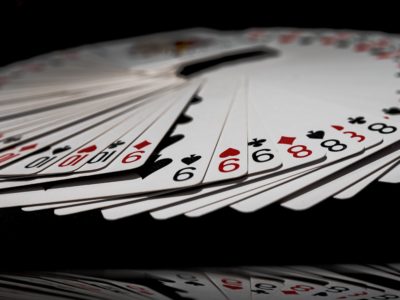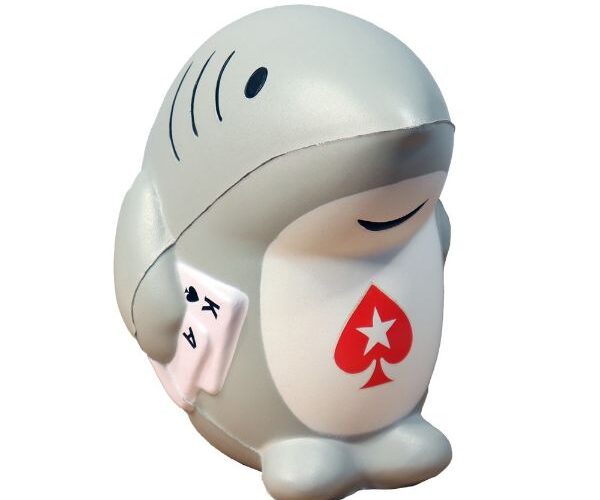As poker players, a lot of things change as we get older. You begin to notice you’re no longer the young gun at your local poker room. You realise you can’t wolf down fast food during a long session like you used to. And you always — always — bring a sweater to the casino in case you get chilly.
But arguably one of the first changes you notice as you and your friends get busy with careers and starting families is that it becomes increasingly difficult to get everyone together in the same room for a game of poker.
But fear not. Your regular home game needn’t come to an end just because you all have kids and live in different cities, or even countries.
‘Can I play online poker with friends?’ I hear you ask.
Of course, you can. Just check out PokerStars Home Games.
Top Tip: Set up a video call (perhaps on Zoom or Skype) alongside your Home Game. It’s fun and you can pick up extra live tells!
HOW TO SET UP A POKERSTARS HOME GAME
To meet up for a game in real life can often take weeks–if not months–of planning. Whether the excuse is reasonable (“We’re on holiday that weekend”), questionable (“I have to be up early to walk my ex’s dog”), or downright ludicrous (“I’m too tired”), everyone has reasons why they sometimes can’t make it.
This simply isn’t an issue with PokerStars Home Games, because:
A) You can set up a Home Game in a matter of minutes
B) All players can be in different locations
C) You don’t even need to leave your sofa to play one
But how do you go about setting your Home Game up? Let’s walk you through it.
First, look for the Home Games icon at the bottom of the list of options on the right-hand side of your PokerStars client. Clicking that takes you into the Home Games lobby, where you can either “Create a Poker Club” or “Join a Poker Club”.
Hit “Create a Poker Club”.
This makes you the manager of your Poker Club and puts you in charge of its lobby. This also gives you the responsibility of naming the club, so you best think of something funny.
From here you can invite your friends to join (via the “Manage Club” tab); make announcements on the club whiteboard (via the “Club Home” tab), and set up your games (via the “Manage Games” tab).
All your friends will need to join is a PokerStars account and the Club #ID, which you’ll see at the top of the club lobby.
The “Manage Games” tab is also where you’ll also be able to access previous results and current league standings of players in your club.
Now all you need to do is decide what kind of poker you’re in the mood for. Whether it’s a Sit & Go tournament, a cash game, or a multi-table tournament (MTT) if there are quite a few players, you can set it up in PokerStars Home Games.
MORE ABOUT POKERSTARS HOME GAMES
OVERVIEW | 3 THINGS THAT MAKE A HOME GAME GREAT
KEEPING HOME GAMES GOING | STEP UP TO MTTs
SETTING UP A CASH GAME
For cash games, head back over to the “Manage Games” section. This is where you can open up cash tables for your club members to play, or organise and schedule tournaments. The cash-game section is in the top half of the window, while the tournaments are below.

The Home Games admin screen
You can also select the number of players permitted at the table (heads-up, six-max or nine-max) and then the currency you want to use.
It’s via this final drop down that you can opt to set up a “Play Money” table, which is especially useful if you just want to practice your skills, or to play against players from different jurisdictions where, perhaps, real money play is not permitted.
You then highlight your preferred stakes for the game in the panel below, and you’re good to go. Don’t forget, you can click the “Add to Favorite Tables” tab and save the options you have selected so that you can access it quickly again in the future.
Finally, click “Share Table” to send details of the game to your friends.
SETTING UP A TOURNAMENT
Click “Create a Tournament” and you’ll be presented with a pop-up list of options for your tournament. You can give it a name, set the starting date and time, and add any notes for participants. All very straightforward.
The next bit is where you have control over all the parameters of the tournament — the game variant, the betting, the number of players per table, the currency, the buy-in, the format (including whether to allow re-buys or not; whether to play it straight, or with bounties, etc.), whether re-entries are permitted, the starting stack, the speed of levels, the length of late registration, and whether to include breaks.
All of these things combine with one other crucial factor to determine how long your tournament lasts. That other factor is how many people you expect to play. As manager of the club, all of this is controlled by you.
The following charts should really help you in preparing a tournament that suits your demands. These charts show how a tournament length alters dependent on participants, starting stacks, length of level and how many players are seated at each table. The options correspond with the options you have as Card Room Manager.
Speed:
There are four speeds, with levels lasting anything from three minutes to 15:
Slow — 15 minutes
Regular — 10 minutes
Turbo — 5 minutes
Hyper — 3 minutes
Starting stacks:
There are also three options for the size of starting stacks: 3,000, 5,000 and 10,000 chips.
Players per table:
You can select whether the tournament is played heads up (ie., two to a table), six-max or nine-max.
The following charts show the approximate time a tournament will take, in minutes, for the approximate number of players. So if, for instance, you want to play 10-minute blind levels, with 27 players, and are going to play nine-max, with a 5K starting stack, you can expect the tournament to last 180 minutes, or three hours.
SLOW (left) and REGULAR (right)

TURBO (left) and HYPER TURBO (right)

It stands to reason that the more players you have, the longer it takes. Similarly, longer blind levels or bigger starting stacks will result in a longer tournament. However, it may not have been immediately obvious that playing with smaller tables increases the time too, so think about playing nine-handed if you want things to go slightly more quickly.
A COUPLE OF OTHER NOTES
— The times listed are for playing time only. They do not take into account scheduled breaks. If you opt to include tournament breaks, they will take place for five minutes at 55 minutes past the hour, so a three-hour tournament will actually take 15 minutes (3×5 minutes) longer. The timings are only approximate, of course, so this shouldn’t have too dramatic an effect.
— Late registration and multiple re-entries can make tournaments last significantly longer. As a general tip, the fewer participants you have, the more inconvenient both can be as late reg and re-entries mean tables break into awkward short-handed play. As such, instead of setting, say, a nine-player tournament with late registration and re-entries, use re-buys instead.
(With thanks to Roman Ivanov, Dave Humphreys and Luke Staudenmaier.)
Back to TopView Other Blogs


























